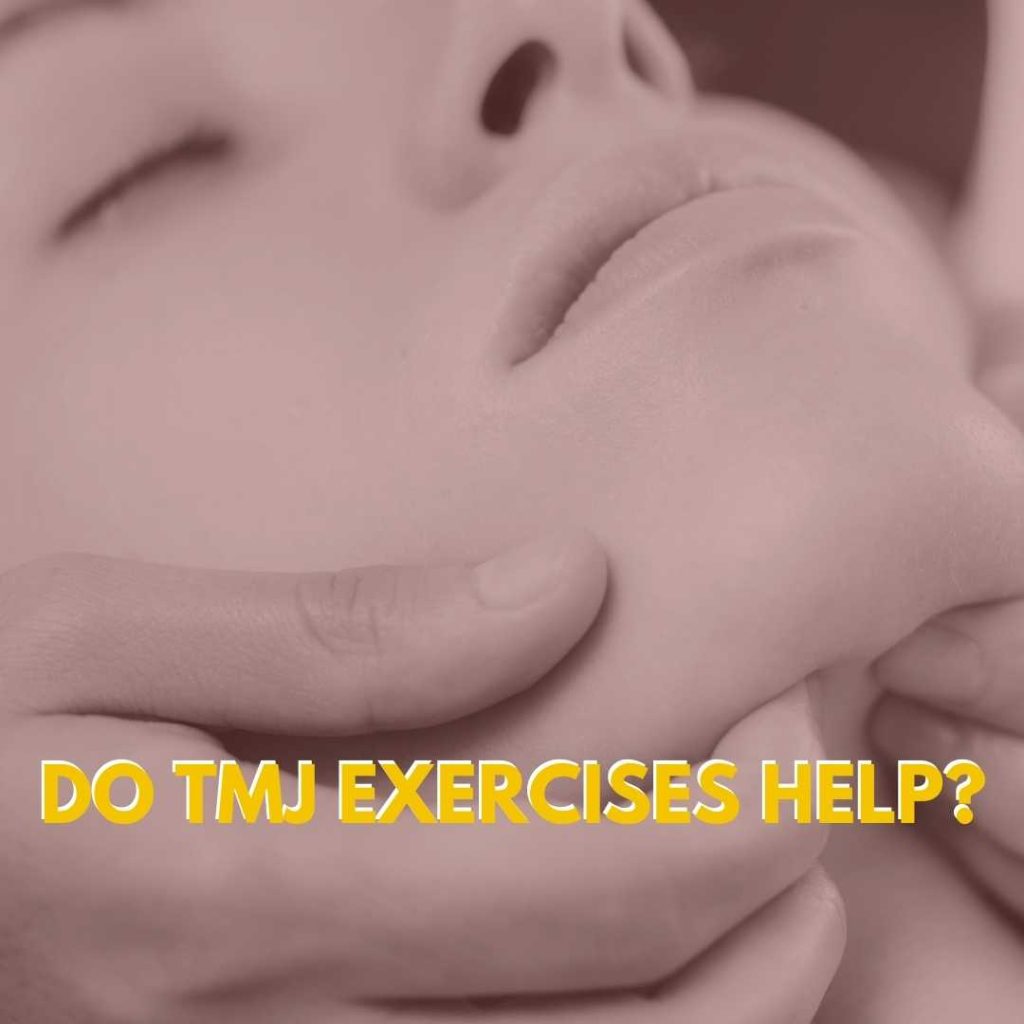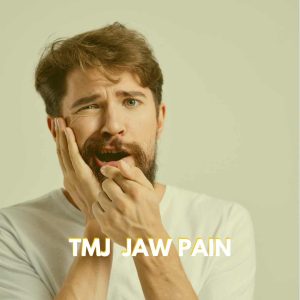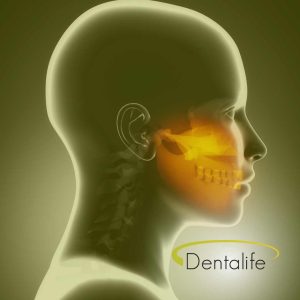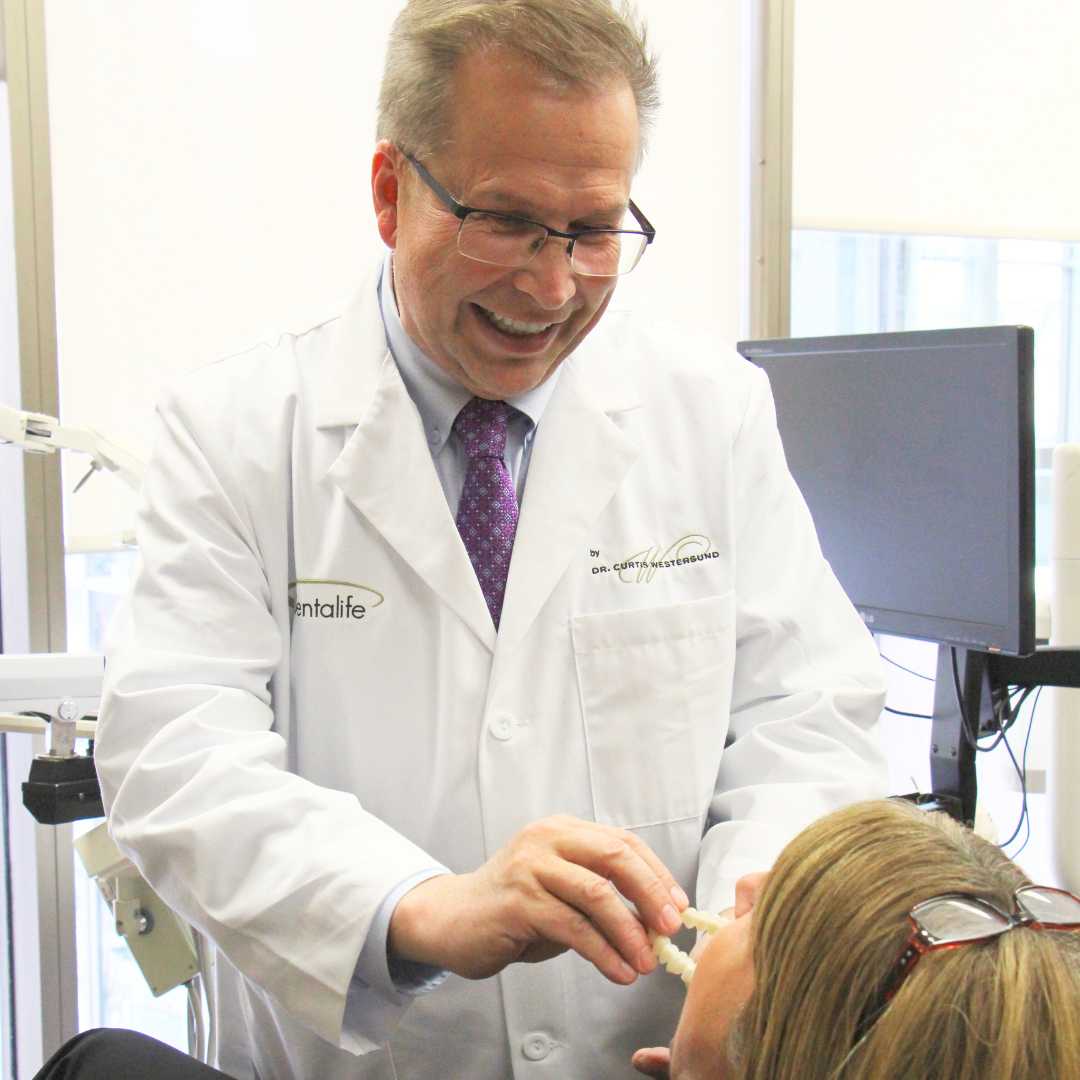Many patients ask us this question: “What can you do yourself to your TMJ disorder?” The Temporomandibular joint, more commonly known as the TMJ, is part of the jaw that helps make your upper and lower teeth work together. It helps the jaw muscles by guiding your jaw when it open, close, chews and grinds food. Problems with the way your jaw form and your teeth work mean that problems occur with this joint. We call this a TMJ disorder (TMD), which often involves chronic pain and discomfort from chewing, tooth grinding or clicking or popping in the joint itself.
People often wonder if they can do something to get rid of their own TMJ problems with so-called “TMJ exercises“. (Link to Colgate’s TMJ Exercises here. And … what does Colgate know about this?)
We realize that doing something at home while you watch TV is a whole lot easier than having to go see a dentist. The problem is that usually this ’TMJ problem’ is actually a problem with the way the teeth, jaws, head, and neck are forced to function everyday. TMJ is a sign of structural strain in the way your head, neck, and jaws work.
Typically, this is something that has developed over a long period of time and cannot be fixed with just a soft diet or chewing some gum. Changing your habits will not address the underlying problems that TMJ is caused by. And guess what: Since that jaw and TMJ are connected to the rest of you, problems with the TMJ will affect the whole body, including how you stand!
Remember, what may seem like simple everyday body problems at first, will accumulate and become bigger problems later in life.
How to tell if you have TMJ disorder
There are a number of symptoms that can tell you if you have TMD. Many people think you need to have TMJ pain to have a problem. While a common symptom is TMJ pain, sometimes the problem is with headaches, neck tightness, ringing in the ears, or just a change in how your jaw can work.
This change in your jaw may mean you experience difficulty opening your mouth, grinding or clenching of teeth, and popping or clicking sounds when chewing or talking. You may not be experiencing pain but there’s a big chance that you’re suffering from a TMJ disorder.
Causes of TMJ disorder
The causes of TMJ disorder are typically related to the teeth and muscles in the jaw. There is an imbalance in how teeth meet and work. There can also be a daytime and nighttime airway issue that is driving these TMJ disorders. There can be an injury to the jaw. Since everyones jaw is built different, there can be something different for each person. What’s important is making sure that it’s treated if it does deteriorate over time.
Treatments for TMJ disorder
There are many different treatments for TMD and which treatment you will need depends on the severity of your symptoms. Some treatments for TMD include over-the-counter pain relief, managing stress levels and better diet. These choices often lead to a lot of frustration since these options do not remove the cause of the jaw trauma.
Preventative measures like a custom-made appliance may be necessary to stabilize the TMJ, and improve the patient’s TMJ issue. Sometimes addressing nighttime sleep disturbance issues will allow a patient to accommodate their TMJ problems.
What is effective in treating TMJ?
Treatment revolves on a proper diagnosis of an individual’s problems. And that diagnosis has to look past the nice white teeth to the whole body. Since people are all different, what may be affecting you will be unique to you.
With a full diagnosis, proper treatment can be discussed and recommended. It would easy to either visit Dr. Westersund or book a free ZOOM call with Dr. Westersund at Dentalife.com, but do it before more serious symptoms start to occur. To learn more about how TMJ can affect your life, go to Dentalife.com or contact our office to book a consultation.




